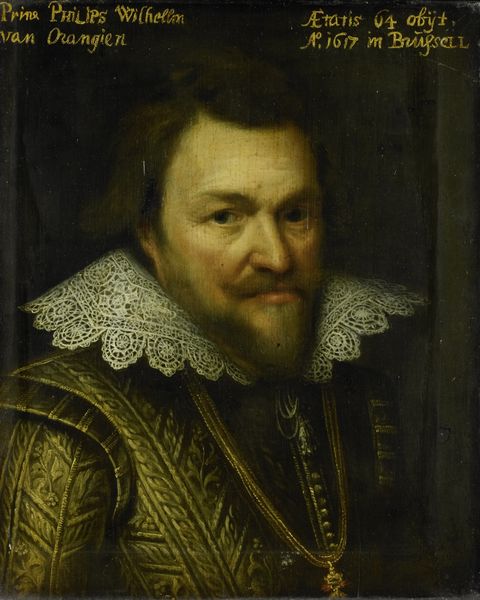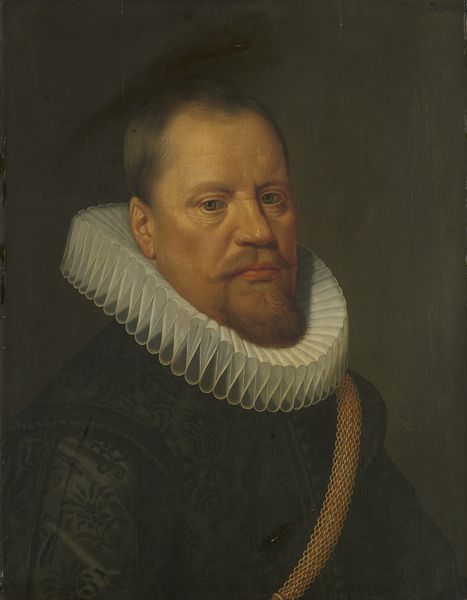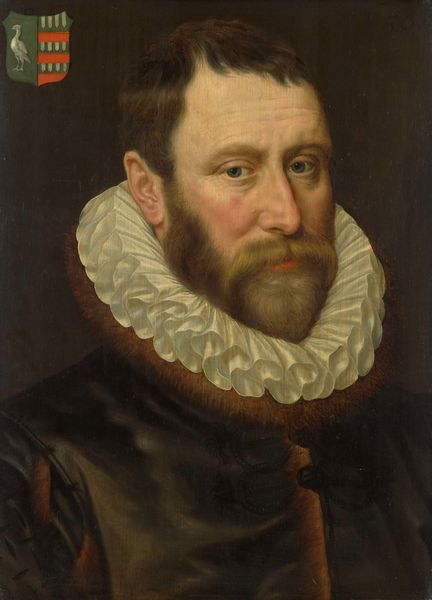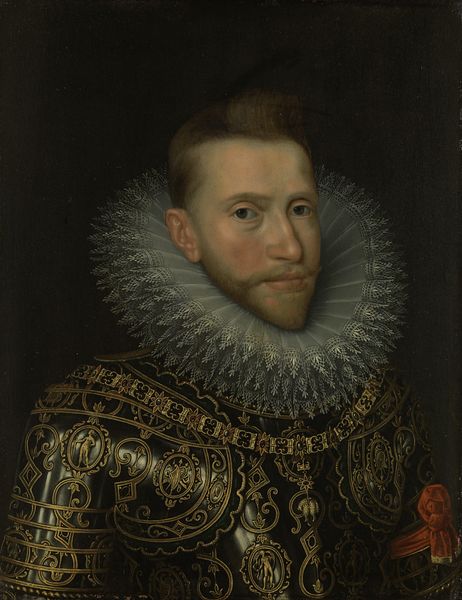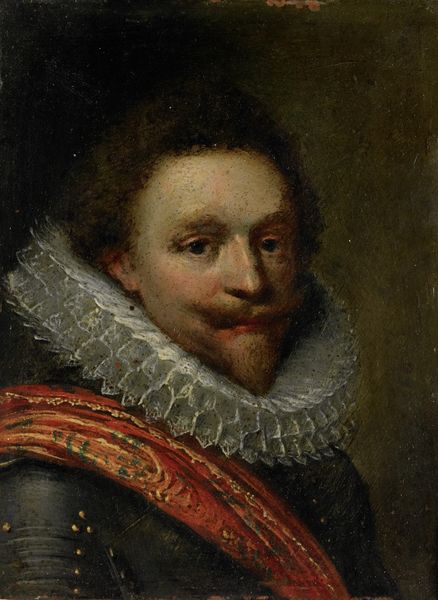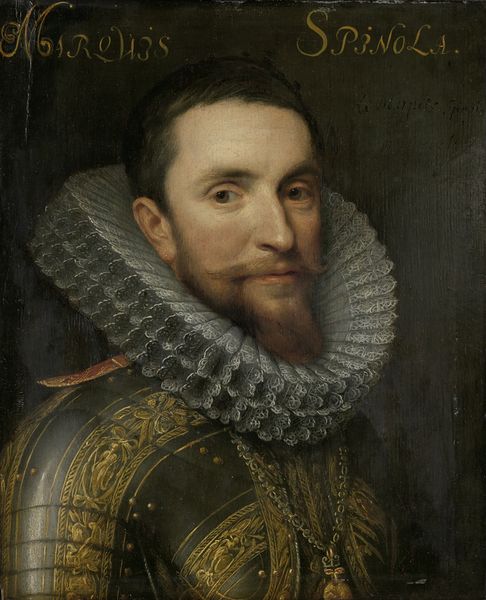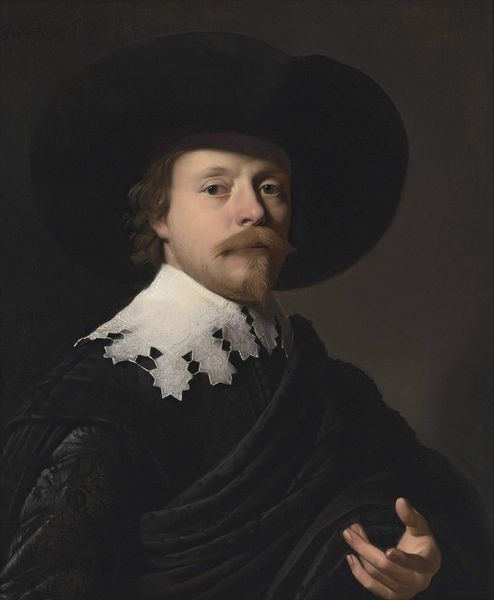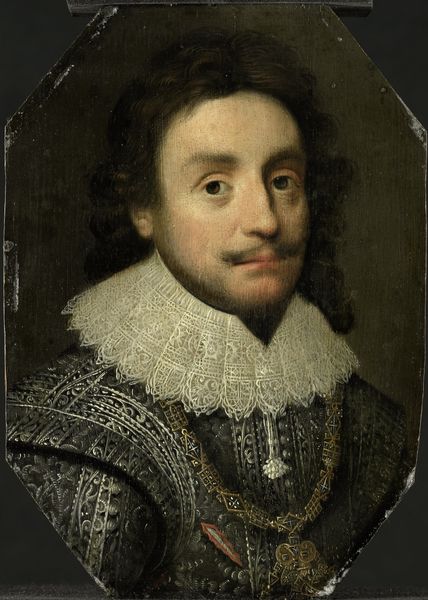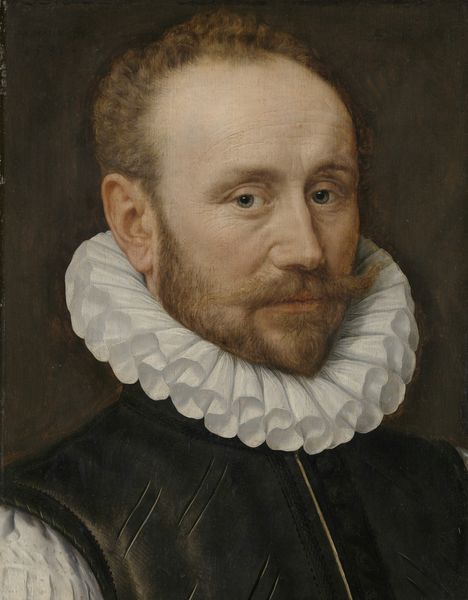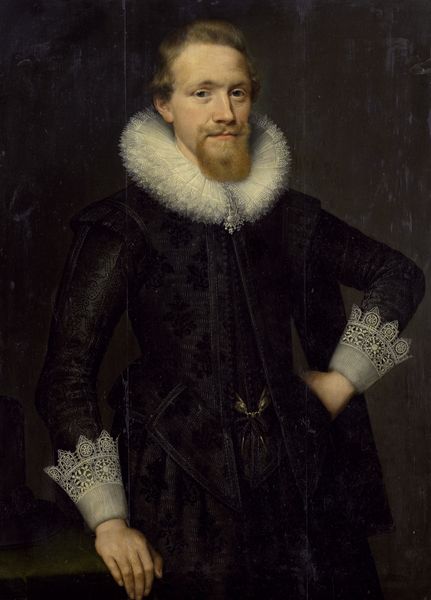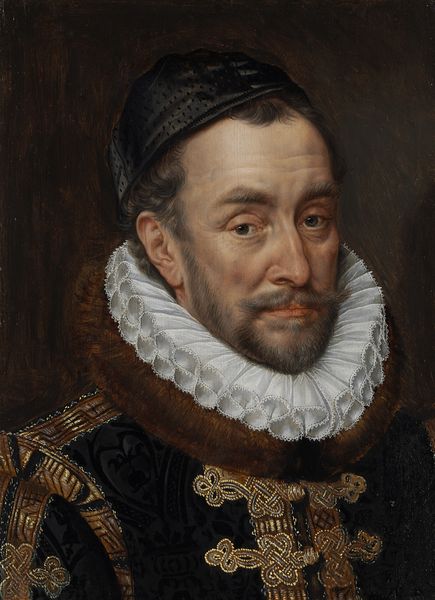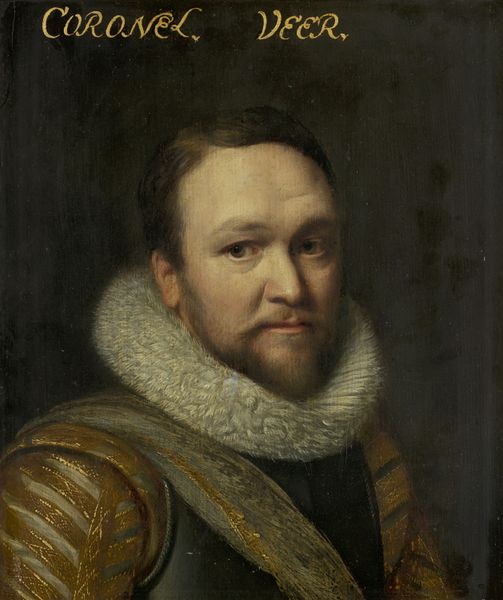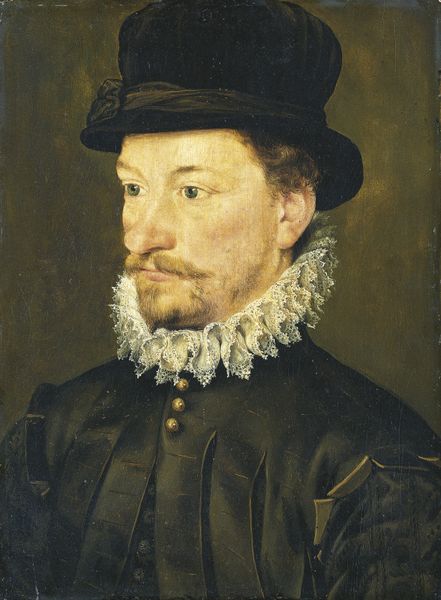
Portrait of Anthonis van Utenhove (?-1625), Lord of Rijnesteyn 1619
0:00
0:00
painting, oil-paint
#
portrait
#
baroque
#
portrait image
#
portrait
#
painting
#
oil-paint
#
male portrait
#
portrait reference
#
portrait head and shoulder
#
animal drawing portrait
#
portrait drawing
#
genre-painting
#
facial portrait
#
portrait art
#
fine art portrait
Dimensions: support height 29.8 cm, support width 24 cm, support thickness 1 cm
Copyright: Rijks Museum: Open Domain
Editor: This is Paulus Moreelse's "Portrait of Anthonis van Utenhove, Lord of Rijnesteyn," painted in 1619 using oil. I find the contrast between the delicate lace collar and the rigid armour so intriguing. How would you interpret the choices Moreelse made in this composition? Curator: Indeed, the formal elements command attention. Notice the painterly technique: how light sculpts the sitter's face, drawing the eye to his penetrating gaze. Consider the juxtaposition of textures - the metallic sheen of the armor against the softness of the lace, echoed by the man's own beard and hair. What does this contrast of textures and forms evoke for you? Editor: Well, to me, the textures create visual interest, of course. I guess, in a semiotic sense, the textural choices contrast softness/delicacy against strength/formidability. It gives the viewer so much information about the sitter’s societal position. Curator: Precisely. Moreelse deftly employs visual language. The structure, a near perfect symmetry broken only by subtle variations in light and shadow, lends the portrait a sense of balance and stability. The figure dominates the picture plane, indicative of the portrait style but equally serving to portray the sitter as dignified and powerful. Do you see how the artist's careful arrangement enhances these qualities? Editor: Yes, absolutely. I hadn't considered how the symmetry contributes to that feeling of stability and power, but I see it now. I appreciate this formalist breakdown—I learned to analyse composition in a more rigorous way. Curator: And I am reminded of how potent formal analysis remains when unlocking historical and contextual readings.
Comments
No comments
Be the first to comment and join the conversation on the ultimate creative platform.
